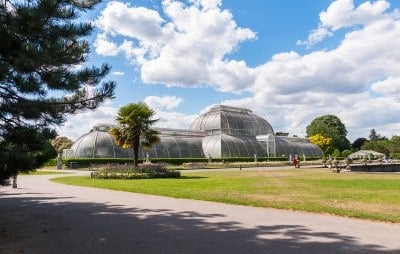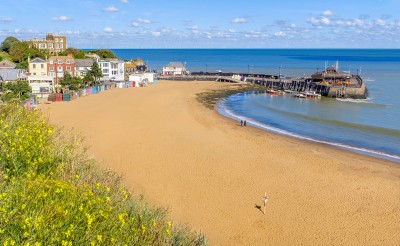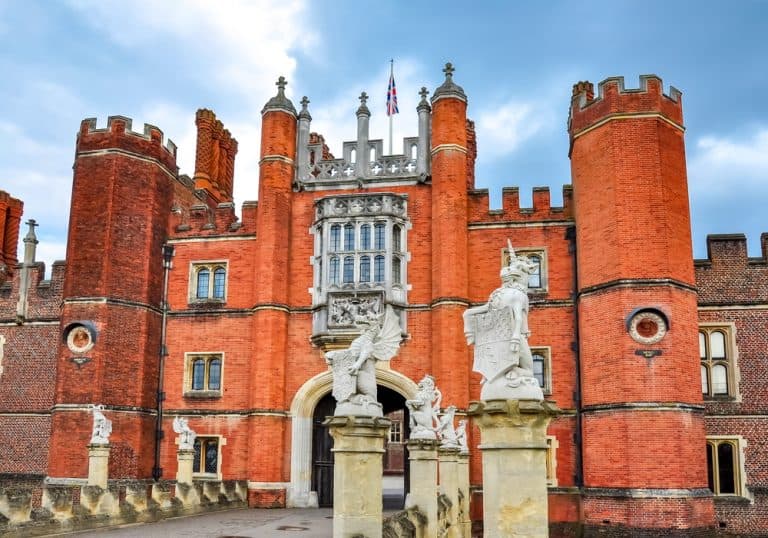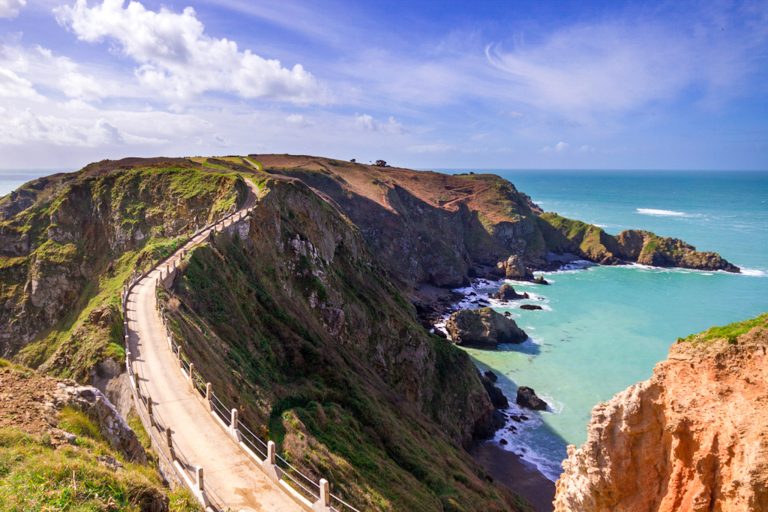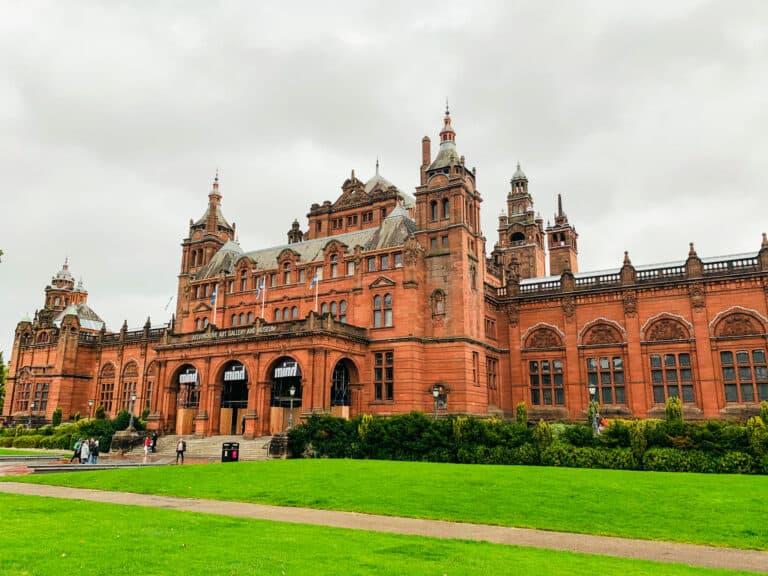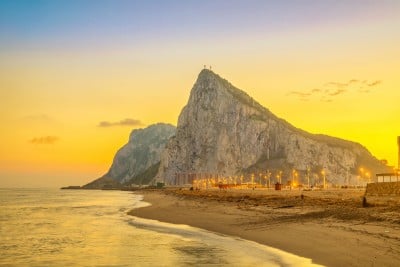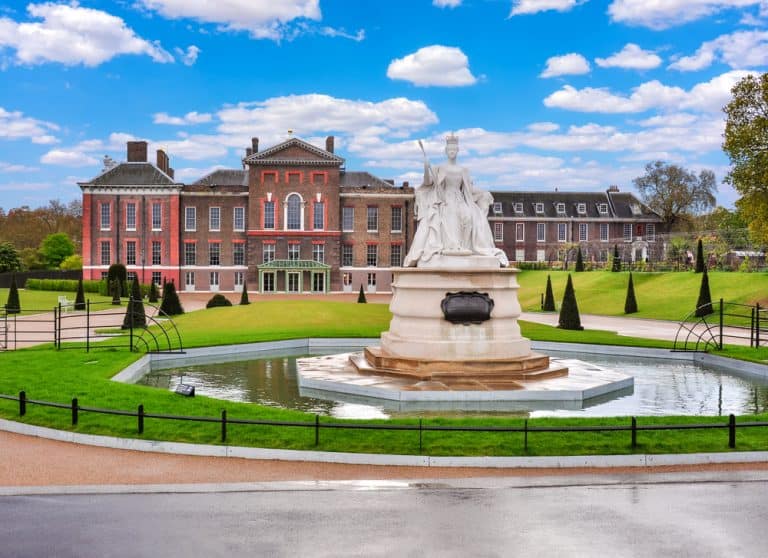What to do at Kew Gardens
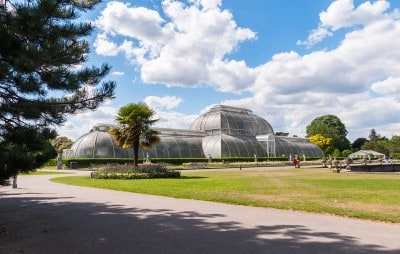
The Royal Botanic Gardens at Kew is a must if you’re in London.
Located close to Richmond upon Thames, it’s a UNESCO World Heritage site that covers over 300 acres and which, according to the website, “has one of the most diverse collections of living plants of any botanic garden in the world”.
There are many attractions to see in its grounds which could easily fill a whole day. In fact it’s so big, you may be wondering what to do at Kew Gardens.
This post contains affiliate links
Read on for suggestions on what to do at Kew Gardens, how to get to Kew Gardens, and information such as eating at Kew Gardens and Christmas at Kew.
And click here for tickets to Kew Gardens.
And if you like gardens and are planning to visit Edinburgh, then you should also visit the Royal Botanic Garden Edinburgh.
What to do at Kew Gardens
As there is so much to see, the best thing to do is grab a map when you arrive. This will help you plan out which attractions you want to explore in the extensive grounds (you can click here to download one).
Below are my suggestions for what to do at Kew Gardens.
You can also purchase a guide for Kew Gardens here.
Stroll around the grounds and beautiful gardens
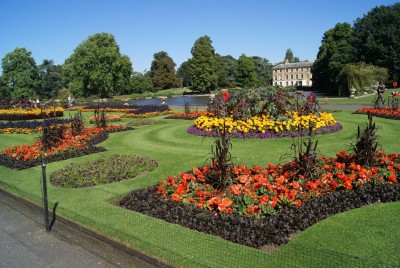
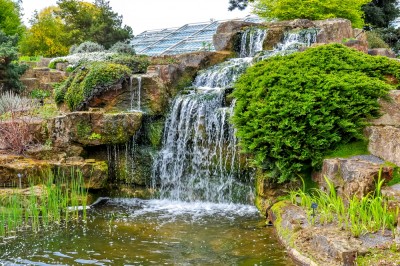
There are a range of different gardens that you will come across as you’re wandering around the grounds of Kew Gardens. They are all different and unique and you’ll get to see some wonderful plants and flowers within them.
The specific gardens include the Mediterranean Garden. This has pines, cypresses, olive trees and lavender plants to transport you “to the sun-kissed landscape of Southern Europe”. In the middle is King William’s Temple, commemorating William IV.
You will also find a Rose Garden (with over 170 different species of the flower), a Winter Garden and Rock Garden, all showcasing different plants, shrubs and flowers.
The Bamboo Garden has 130 species of the plant from various regions of the world. The Minka House is here, an example of the Japanese farmhouses that existed in previous centuries.
And then there is the Japanese part of the garden. This comprises three sections: a Garden of Peace, a Garden of Harmony and a Garden of Activity.
The sections are said to symbolise and represent different things, including a Japanese tea garden, the natural world, and the harmonisation of different landscapes.
Nearby is Chokushi-Mon (Gateway of the Imperial Messenger) which is modelled on a temple in Kyoto in Japan.
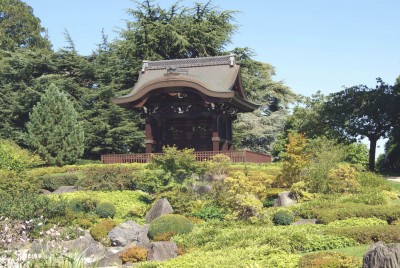
There is also a garden specifically designed for children.
The Children’s Garden is large: it spans the area of 40 tennis courts and has over 100 trees within it and a canopy walk.
Note that if this is something you’d like to add into your visit to the Gardens, a one hour (free) slot needs to be pre-booked in advance.
Visit the spectacular Glasshouses
There are several glasshouse within the Gardens that are worth visiting. These recreate the living conditions in which different types of plants need to survive.
For example, the Davies Alpine House showcases alpine plants which need cooler and windier environments.
The Waterlily House, as its name suggests, is all about the Amazon waterlily; these are displayed in a large circular pond inside. The Bonsai House has almost 60 trees within in it, with one that is 180 years old.
The Princess of Wales conservatory is also a glasshouse. This one contains different ecosystems and their associated flora (e.g. dry zones with cacti, steamy zones with tropical flowers and an area containing carnivorous plants such as the Venus flytrap). Nearby you will also find a section on aquatic plants.
Bigger, and visually more spectacular, are the Temperate House and Palm House. If you can only visit a couple of glasshouses on your trip, then I’d try to include at least one of these.
The Temperate House
The Temperate House is the world’s largest Victorian glasshouse – and it’s not hard to see why from the image below.
It houses over 10,000 plants from temperate zones around the world. All of these are kept in conditions of 10 degrees centigrade and above.
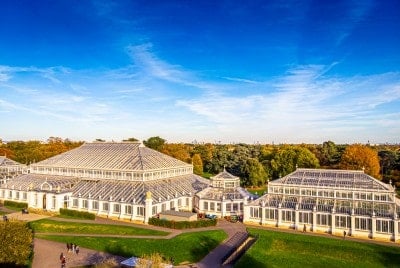
The Palm House
By contrast, the Palm House houses tropical plants. It is described on the website as an “indoor rainforest” and the tropical heat inside makes it a perfect place to duck into if you visit during the winter months.
And apparently the world’s oldest pot plant is in here!
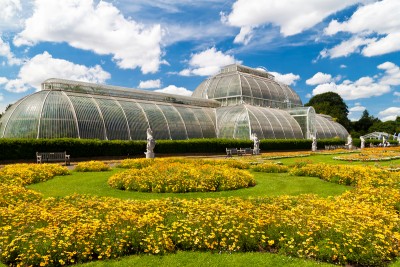
Try to explore inside the glasshouses if you can. If not, then it’s still worth seeing these beautiful structures from the outside.
There’s also a lake by the Palm House: grab a seat on one of the benches and look back to this wonderful structure.
I defy you not to be just slightly impressed!
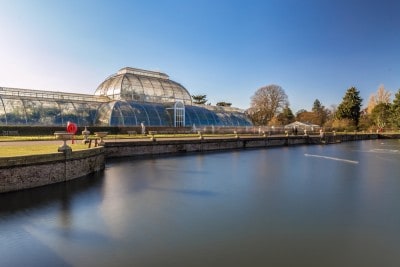
Learn about some of the history of Kew at Kew Palace
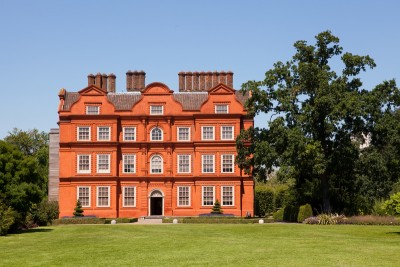
Kew Garden also has its very own palace!
The Palace is a modest (as palaces go!) 17th century red building set amongst the grounds (it’s actually the smallest royal palace).
In the early 18th century, George II took up residence here. It was then used by several members of the Georgian royal family, including George III when he became ill and needed rest and medical care. Queen Charlotte, the wife of George III, also died in the Palace in 1818.
Queen Charlotte’s Cottage, a rustic cottage also to be found here, was apparently a retreat for the Queen. She kept animals in the paddock behind (according to the website, the first kangaroos were kept here in the late 18th century).
You can visit Kew Palace as part of your Kew Gardens entry. It is open daily from 11 am. Ordinarily you can also visit Queen Charlotte’s cottage, but it is currently closed for repairs.
You can also learn about the history of Kew Gardens here.
Wander up to the Sackler Lake
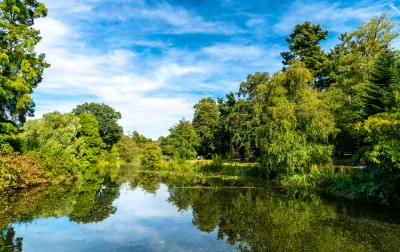
If you want to stretch your legs a bit, you can wander up the leafy Syon Vista to the pond. The walk will take you past some of the garden’s 14,000 trees.
The area surrounding the pond is really peaceful. There are benches where you can take the weight off your feet and watch the birds on the water.
When we visited, there were ducks (complete with a little family of ducklings), moorhens and a massive swan milling about nearby.
You can then cross over the Sackler Crossing bridge and make your way back to the main section of the gardens.
See the Gardens from up high from the Treetop Walkway
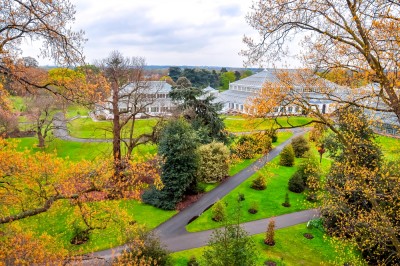
After wandering through the Gardens, you can also view them from up high from the Treetop Walkway.
This is 18 metres high and gives you the opportunity to see the gardens from a completely different vantage point. It is not far from the Sackler Lake and Crossing so you can pop across to this on your way back from there.
Marvel at the Great Pagoda
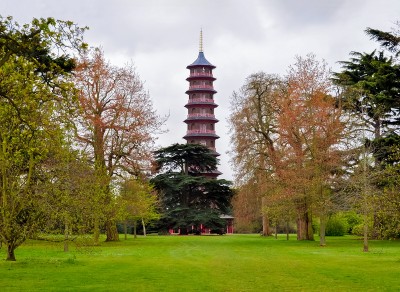
The striking 18th Great Pagoda can be found in the Lion Gate section of the grounds. This was designed for the Royal Family and stands 50 metres high looking out over the gardens.
You can climb to the top if you’re brave enough (or fit enough to tackle the 253 steps!). But if you don’t fancy this, I’d still recommend taking a look.
Pop into the Hive
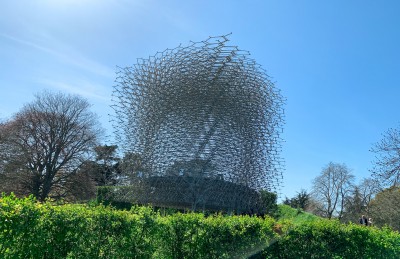
The Hive is a 17-metre high wire installation that you can walk up into.
It is designed to emulate a beehive, with buzzing sounds and flickering lights. These apparently glow and flicker in keeping with the bees that buzz around Kew Gardens.
It’s definitely worth a quick look inside if you’re in this part of the garden.
Visit a gallery
If you like art, or if you happen to visit on a wet day, then there are two art galleries that you can pop into and where you can admire an enormous number of paintings.
The Marianne North gallery displays over 800 botanical paintings. These were created by the artist in the 19th century as she travelled around the world.
The second is the Shirley Sherwood Gallery of Botanical Art. This is billed by Kew as “the world’s first public gallery dedicated to classic and contemporary botanical art”. It displays work by a number of different artists and holds regular exhibitions.
Both galleries are free to enter once you have purchased your Kew Gardens ticket. They are both open every day.
Kew Gardens entry
The gardens are open from 10am every day. They close at 7pm during the week and 8pm at weekends (apart from when there are special events being held).
Christmas at Kew
Kew is a wonderful place to visit at any time of year. But it’s especially magical at Christmas. The gardens are dark and wintery and are lit up with sparkling lights.
The gardens are open in the evening during this period and have a number of activities scheduled for both children and adults like.
This year, they promise the chance to see lights and flames, visit food stalls selling festive food and drink, meet Father Christmas and experience the light display at the Palm House.
Tickets for Christmas at Kew need to be booked in advance (it tends to be popular). The festivities this year run from 17th November until 9th January 2022.
How long do you need at Kew Gardens?
The answer to this will really depend on how much you want to see and do and what time you have available. The weather may also have a bearing.
However, I’d really recommend at least three to four hours so that you can get to see a fairly wide range of things.
Equally, you could easily spend a whole day here if you have the time: you can experience the gardens at a more leisurely pace and possibly take some food and drink to feast on in the grounds.
How to get to Kew Gardens
You can enter Kew Gardens through several gates.
Depending on which one you choose, you can reach the gardens by train (from London Waterloo to Richmond station or Kew Bridge station, a journey time of around 20 and 30 minutes, respectively).
You can also take the London Underground to Kew Gardens station on the District Line and from there it’s a five minute walk to the nearest entrance gate.
Alternatively, you could drive, although parking spaces may be limited at peak times.
Eating at Kew Gardens
There are several places to grab a bite to eat within the gardens. This includes the Victoria Gate café for snacks and The Botanical. Here you could treat yourself to a delicious Kew Gardens afternoon tea.
The Orangery also offers hot food such as soup, salads and quiches, as well as sandwiches and paninis. The Pavilion Bar and Grill serves more substantial hot food, including fish and chicken dishes, burgers, and warm baguettes.
There are also pop-up stalls selling drinks and snacks dotted around the grounds.
All eateries are open every day, but close at slightly different times, so I’d recommend checking the website in advance if there’s a particular place that you’d like to eat in.
People also often ask can you take your own food into Kew Gardens? The answer is yes.
This is a great idea: if the weather is fine, I’d suggest taking a blanket and some food. There are plenty of places within the gardens for a picnic, and some areas also have picnic benches.
Other ideas for UK short breaks and day trips
I hope I have given you a flavour of what to do at Kew Gardens. If you need ideas for other trips in the UK, then you might find other posts I have also written of interest:
Main image and featured image (c) Mkos83/ Dreamstime.com
As an Amazon Associate, I earn from qualifying purchases

